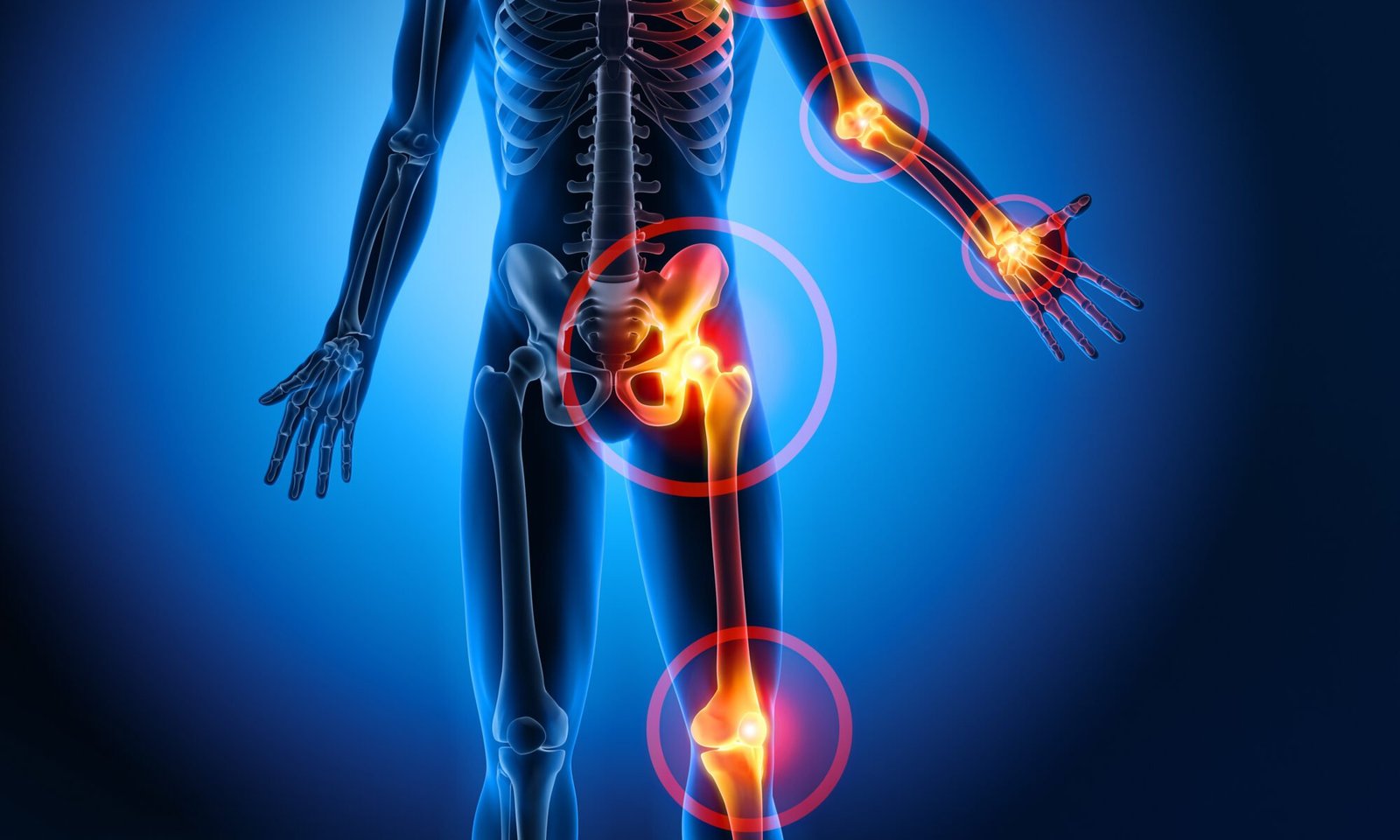Gout Facts
Gout is a condition that results from high levels of uric acid in the blood. Uric acid is a byproduct of the body’s breakdown of proteins. One of the gout facts is that it affects both men and women and can often be hereditary. Gout treatment usually involves lowering uric acid levels with drugs or surgery.
What is Gout?
Because of uric acid buildup in the blood, gout is an arthritic condition. Uric acid is a naturally occurring substance that can form when the body breaks down muscle tissue or the liver processes fats and proteins. Elevated uric acid levels can cause inflammation and damage the joints, kidneys, and other organs.

Gout can be hereditary, meaning you are more likely to develop it if your parents or siblings have it. It can also be caused by high levels of alcohol consumption, obesity, or a lack of exercise.
Controlling your uric acid level by dietary and lifestyle modifications is the best method to prevent gout. Excessive intake of purine foods (such as organ meats, seafood, and some nuts) or alcohol can increase uric acid levels. Consuming protein and fiber-rich foods may also help lower uric acid levels.
Causes of Gout
Uric acid crystallization is the root cause of gout. In the blood. This can be due to a variety of reasons, including:
- – Excessive drinking
- – High blood pressure
- – Obesity
- – Kidney disease
- – A high intake of purines, such as seafood and animal products
- – Medications that cause renal stones or cysts in the kidney
- – A family history of gout
Symptoms of Gout
Gout is an excruciatingly painful form of arthritis that most commonly affects the feet, ankles, and knees. The disease is caused by high levels of uric acid in the blood.
Uric acid is a waste product produced when the body breaks down food. It can accumulate in the joints if not flushed out regularly.
The symptoms of gout include intense pain, redness, and swelling. In some cases, gout can lead to permanent damage to the joints.
Gout has no cure, but some treatments can alleviate the symptoms. Treatment typically involves reducing uric acid in the blood, using medications to relieve pain, and correcting any underlying health conditions causing the uric acid level to rise.
Gout Facts: So What Gout Looks Like?
Gout is arthritis caused by uric acid crystals in the joint spaces. The crystals cause inflammation and pain, which may be noticeable when you walk or stand. In advanced cases, gout can lead to renal failure and death.
There’s not much known about the source of gout, but it is thought to be related to high uric acid levels in the blood. The most common sources of uric acid are high-purine foods (such as bacon, sausage, ham, and seafood) and alcohol. Other variables that may enhance your gout risk include obesity, viral infections (such as Epstein-Barr virus), and certain medical conditions (such as kidney disease or lupus).
The good news is that there are treatments available for gout. These include: reducing your intake of high-purine foods and drinks; taking medication to lower your uric acid levels; using orthopedic shoes or devices to help relieve pressure on the joints; and undergoing surgery if the condition is severe enough.
Gout Risk Factors
Gout is a disorder that is characterized by uric acid buildup in the joints. The most common places for gout to develop are the big toe, first metatarsal joint, second metatarsal joint, and fifth metatarsal joint.
There are many gout risk factors, including:
- 1. Being overweight or obese
- 2. Having a family history of gout or any arthritis
- 3. Smoking
- 4. Drinking excessive amounts of alcohol
- 5. Taking certain medications (such as NSAIDs)- Being over the age of 40
- 6. Having certain genetic markers that make you more likely to develop gout
Gout and Arthritis
Gout is arthritis caused by too much uric acid in the blood. Uric acid is a waste product made when the body breaks down food. Gout is most frequent in adult men over the age of 50 years. The reason is unknown. However, genetics and metabolism may be involved. Gout and arthritis symptoms include joint pain and tenderness, especially in the big toe, ankle, and knee. Other symptoms include fever, fatigue, and a red, swollen, and inflamed joint.
There is no cure for gout, but therapy focuses on symptom relief. Treatment options include medication, lifestyle changes (such as limiting alcohol intake), and surgery (such as a total knee replacement).
Gout Prevention
If you have gout, you can take steps to prevent it from happening again. Here are some tips to help you avoid gout:
- 1. Avoid high-sodium foods and drinks. These can increase your blood pressure and lead to gout. Try to replace high-sodium items with low-sodium alternatives, such as canned tomatoes, tomato sauce, and bouillon cubes.
- 2. Drink plenty of fluids. When thirsty, drink water, unsweetened juices, or 16 ounces of low-fat milk daily. If you can’t drink enough fluids, speak with your doctor about prescribed hydration therapy.
- 3. Keep your weight under control. Uric acid crystallization is the root cause of gout. Make sure to get enough exercise and avoid being overweight. Excessive weight gain may also cause joint inflammation.
- 4. Limit your intake of alcohol. Alcohol can increase the risk of gout by raising your blood pressure and causing inflammation in the joints. If you choose to partake in the activity of drinking alcohol, you should make it a priority to limit your consumption to no more than one or two drinks per day at the most.
How to Treat Gout
Gout is a common problem that can be treated with medication and lifestyle changes.
Medications used to treat gout include NSAIDs, Aleve, and ibuprofen. NSAIDs are the most effective treatment, but they may also cause side effects such as stomach pain, tooth erosion, and heart problems. Aleve and ibuprofen are less likely to cause side effects, but they don’t work as well as NSAIDs. Minimize your alcohol use, eat a balanced diet, exercise regularly, and avoid smoking, as lifestyle modifications can help reduce your risk of gout.
Gout is a condition that manifests itself in the form of excruciating pain and swelling in the joints. This ailment is brought on by abnormally high uric acid concentrations in the blood.
There are many treatments for gout, but the most common is allopurinol medication. Allopurinol can help to reduce the amount of uric acid in the blood. It also helps to relieve the pain and swelling associated with gout.
If you are experiencing gout symptoms, you must talk to your doctor about a treatment plan. You may also be able to self-treat with allopurinol if you can take it regularly.
Gout Leg
Gout leg is arthritis that affects the joints in your feet, ankles, and knees. The pain typically worsens after meals and with physical activity. There isn’t a specific cause for gout, but it can be caused by various factors, including genetics and diet. Gout is typically treated with medication and rest. Surgery may be necessary to remove the affected joint if the condition doesn’t improve with treatment.
Gout Blood Test
The agonizing pain that can be caused by gout, a kind of arthritis that manifests itself in the joints, can be caused by gout. It is brought on by the blood’s abnormally high amounts of uric acid. A gout blood test can help determine whether or not you have the ailment and whether or not you require therapy.
A gout blood test includes a uric acid level and other tests to determine the cause of the high uric acid levels. The test may also measure your creatinine level, a waste product produced when the body breaks down muscle tissue.
The results of a gout blood test may be used to:
- – Identify whether you have gout.
- – Determine the extent of your gouty arthritis
- – Help you decide whether you need treatment.
- – To find relief from the pain and inflammation that gout creates, a person who suffers from the ailment may need to take medication or seek medical assistance.
Gout and Coffee
Interestingly, gout and coffee seem to have a correlation. Gout is arthritis caused by high levels of uric acid in the blood. Coffee has decreased uric acid levels, which may help prevent gout flares. Coffee also provides various health benefits, such as lowering anxiety and boosting cognitive function. If you are experiencing gout symptoms, talk to your healthcare provider about whether coffee may be a helpful way to manage your condition.
Gout NSAID
Gout is a type of arthritis that most commonly affects the feet and ankles. Gout is caused when uric acid builds up in the blood over time and can lead to severe pain and inflammation. There are several different types of gout, but all share some common features.
Gout is most common in adults between 50 and 70 but can also occur at any age. The precise etiology is unknown, although it appears to be a combination of hereditary and environmental factors (such as obesity, high blood pressure, and a high-salt diet).
Gout has no solution. However, treatments can help ease symptoms. Medications such as Gout NSAIDs (nonsteroidal anti-inflammatory drugs), colchicine (a medicine used to treat gout), or allopurinol (an anti-inflammatory drug) may help reduce the amount of uric acid in the blood. In some cases, corticosteroids may also be effective. Surgery may be required in extreme circumstances where other treatments have failed.
There are several steps you can take to prevent gout: keep your weight under control, maintain a healthy diet, avoid smoking,
Gout and Tomatoes
Gout is a joint disease caused by excessive uric acid levels in the blood. Uric acid is a natural product of the body’s breakdown of purines. Uric acid crystals form in the joint spaces of those who have gout, causing discomfort and swelling.

Gout and tomatoes share an inverse relationship. Tomatoes are a common source of uric acid. The vegetables contain high levels of purines, which can form uric acid when the body breaks them down. When people with gout eat tomatoes, their levels of uric acid in their blood rise, developing gout symptoms. Eating tomatoes may increase your risk for gout, but it doesn’t cause the disease.
People with gout should avoid foods with high levels of purines, such as meats, fish, shellfish, legumes, and nuts. They should also resist consuming alcohol and eating a lot of tomato products. If you have gout, your doctor may recommend taking supplements that contain minerals or vitamins that help to break down the uric acid.
Gout and Uric Acid
Gout is an inflammation of the joints caused by excess uric acid in the blood. Uric acid is a natural product found in the body and is important for healthy joint function. Too much uric acid can lead to gout, a condition that can be painful and debilitating.
You can do many things to reduce your risk of gout and uric acid, including maintaining a healthy weight, eating a balanced diet, and avoiding excessive alcohol consumption. If you experience joint pain or swelling, see your doctor for a diagnosis and appropriate treatment.
If you experience joint pain or swelling caused by gout, talk to your doctor about your options for treatment.























